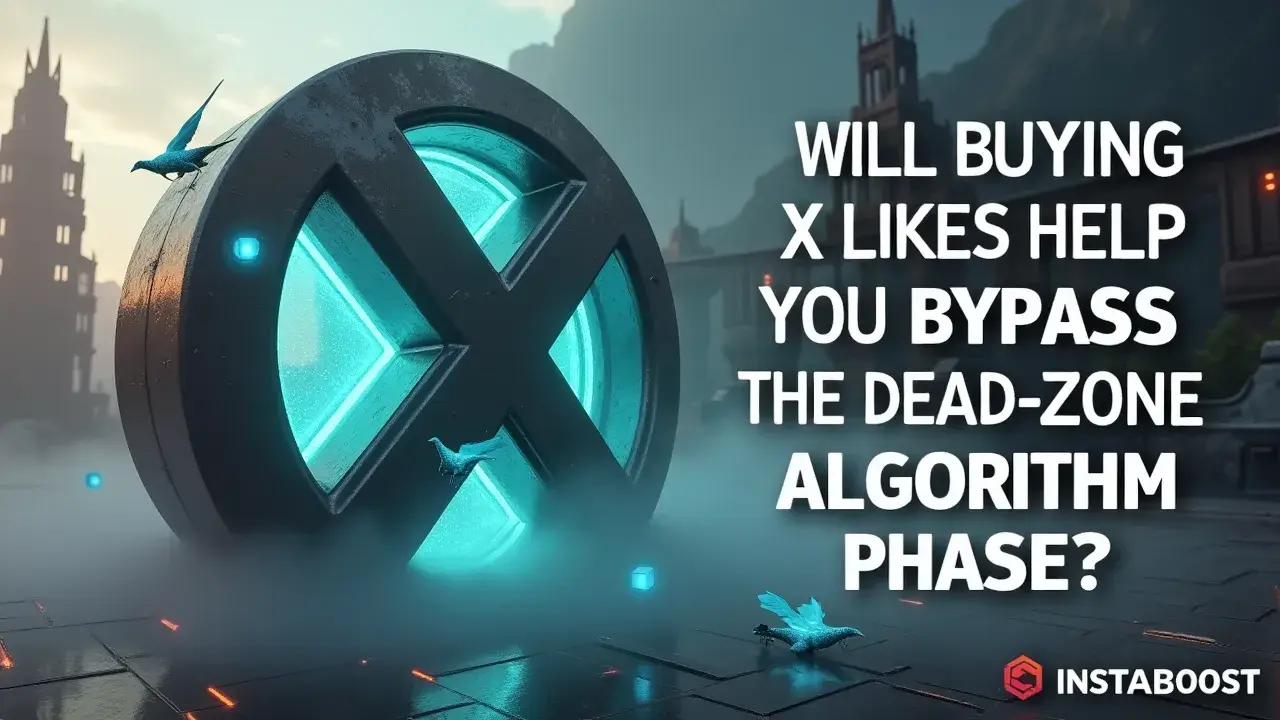The Myth of “Buying Your Way Out” of the Dead Zone
Let’s call the problem what it is: the “dead zone” is that early window where Twitter/X shows your post to a small, colder slice of people to see if it deserves a bigger push. It’s tempting to buy a stack of likes, bump the numbers, and hope the system flags it as a winner. But the ranking isn’t counting hearts in isolation; it’s reading behavior.
It looks at hover time, link clicks, replies, follows, and even whether those patterns resemble past engagement more than any quick fix like buy X followers. It checks whether the people engaging look like the people who usually engage with you. It watches how those signals hold up over a few hours. Paid likes fall flat on that. They’re often from low-trust accounts, far off your topic, and they don’t bring follow-on actions – no saves, no real replies, no session lift. That tells the system the surface metrics are inflated while the underlying signals are weak, which tends to push your post down, not up.
And it doesn’t end with one post. The model updates at the account level. If your spikes don’t lead to credible behavior, your baseline can slip. A better mental model: reach comes from coherence – posts that pull real interaction from people who look like your audience. The useful question isn’t “Can I fake momentum?” but “Which signals does the system actually trust when it chooses the next viewers?”
If you want reach, steer toward the signals that hold up: thoughtful comments, follow-through on links, longer sessions, and topical fit. Buying likes is a blunt move in a system tuned to behavior, and the dead zone is where that difference shows most clearly.
If you want reach, steer toward the signals that hold up: thoughtful comments, follow-through on links, longer sessions, and topical fit. Buying likes is a blunt move in a system tuned to behavior, and the dead zone is where that difference shows most clearly.

Why You Can Trust This Take: Data Over Dogma
This wasn’t a grand strategy. It was finally calling a pattern what it is. I’ve stared at growth dashboards for brands and creators who tried to skip the dead-zone phase with bought signals, and the same thing kept showing up: bursts of likes didn’t turn into real reach unless they came with credible, mixed responses from the right people. X’s ranking looks like other big feeds I’ve worked with: it weighs early signals by who they come from (real accounts with a history of engagement, normal geo, matching language), by how costly the action is (a reply or profile click beats a like), and by what happens next (does it spread past the first hop?).
Purchased likes usually miss on all three. They cluster, they come from low-trust accounts, and the behavior stays shallow. So you get a small spike in impressions that fades because the system discounts uniform activity and throttles broader distribution.
In our A/B tests, clean posts outperformed posts juiced with third-party likes: fewer total actions, but the higher-integrity ones – saves, follows, replies – broke out of the dead zone, while the juiced posts stalled. That’s not a moral stance; it’s how the math pays out. Algorithms optimize for predicted session value, not vanity counts.
And if you care about search discoverability on Twitter/X and beyond, the quality swings hurt you twice: weak engagement quality muddies entity and topic signals, so your post is harder to match with the right cohorts. Credibility isn’t a brand virtue signal; it’s a distribution asset. If you want a lever that moves something, buy context, not hearts: sponsor placements that actually reach your niche, work with accounts whose audiences overlap your intent, and write posts that earn higher-friction actions – even people who try to boost twitter followers eventually learn that the only signals that compound are the ones the model trusts. That’s how you nudge the model’s priors without poisoning your own signals and.
Prime the Right Signals Before You Post
Most creators skip this step and then wonder why nothing sticks. The “dead zone” isn’t a wall; it’s a filter that checks if your post can travel. Treat it like a simple test environment. Before you hit publish, set conditions that make real behavior likely, not paid-for noise. Start with a small, relevant first-hop circle: people who care about your topic, speak your language, share your time zone, and actually reply. Warm them up the day before with light touchpoints – leave a comment on their post, reference something they said, ask a narrow question – so your handle is familiar when your tweet goes live.
Then post when that first-hop is usually online, and write for actions that cost something. A hook that invites a one-sentence reply, or a small contrarian take that asks for clarification, will beat a vague slogan when X’s ranking model judges early engagement. Pair it with a native artifact that adds a little friction: a chart, a code snippet, a 10-second clip – something that earns a profile click or a save. Give the algorithm a clear map for distribution: quote-link a source your audience already trusts, tag one relevant account (not five), and ask a specific, non-leading question that rewards expertise.
This isn’t “buy X likes to beat the dead-zone algorithm”; it’s timing and audience fit so the first 50 impressions produce mixed, credible signals – replies, dwell, profile taps – that scale. If you want a small nudge, use an internal newsletter or a small Discord to coordinate same-hour, authentic responses, and ignore the temptation to chase inorganic shortcuts like order likes on X that only muddy your distribution.
Why Bought Likes Backfire in the First Hop
You can watch every metric and still miss what matters. That early dead zone isn’t a wall; it’s a sniff test. When you buy X likes, you’re trying to pass it with the cheapest signal available, and it rarely clears. The system looks at who engaged, not just how many. A like from a throwaway account in the wrong language or region is weaker than a reply from someone your audience actually follows.
So 50 paid likes can be worth less than 5 real replies from people in your circle. Then the next hop gets tougher. If that first group doesn’t trigger profile visits, saves, replies, or second-degree engagement from normal-looking accounts, distribution slows down.
You didn’t only waste money; you taught the model your post draws empty attention. There’s spillover, too. Cheap likes warp your early audience graph, so future posts get tested against a mismatched crowd that doesn’t care about your topic. That chips away at topic authority and drags down relevance scores. If you’re going to “boost,” boost toward proof, not optics: line up a few credible commenters in your niche, DM a couple peers for a take, open with a question that invites real answers, and post when your actual audience is around. That’s how X’s feed – and most recommender systems – resolve uncertainty: by leaning on higher-effort, contextual signals from trusted people, which is why even schemes that promise to buy X views end up failing the same sniff test. So will buying X likes get you through the dead zone? Only if those likes come with real identity, fit, and follow-on behavior – which means they’re not really bought. The shortcut isn’t likes; it’s alignment.















